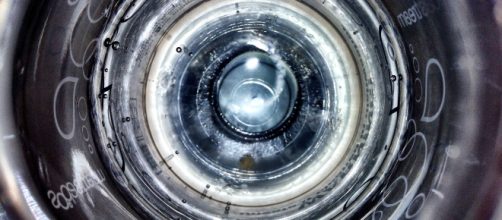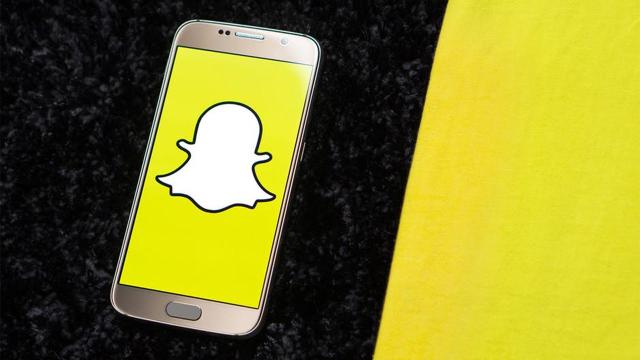It’s Black History Month, and Snapchat is celebrating in style. This week, the social media giant launched an immersive lens to allow users to explore a “virtual art gallery” featuring the work of black millennial artists.
Spearheaded by Snapchat’s black employee group, coined SnapNoir, the feature includes art by Gianni Lee, Bianca Pastel, Jessica Spence, Jameel Mohammed, and Paracosm, and will be available until the end of February.
A marriage between art and technology
Snapchat’s gambit is just one indicator of an increasing synergy between art and Technology, often as a bid to make deeper points about the direction society is heading.
One exhibit in New York, for example, taps into audiences’ inner voyeurist to make a point about the intersection of security and privacy in a modern home.
Lauren McCarthy’s “SOMEONE” is a series of laptops set up in a Hudson Street gallery, all connected to a veritable feast of smart devices placed inside four homes. For two hours each day, visitors are permitted to use the laptops to control any smart device within the four homes; without leaving the gallery, they can flick the lights on and off, play music, and even interact with the homes’ inhabitants via text-to-speech technology.
Other exhibitions have similarly played around with virtual reality and interactive installations. In Mumbai, an exhibition titled ‘The Future Is Here’ includes nine room-size installations with visual projections, voice and movement sensors and abstract codes as a commentary on the future of classical art.
Designed by millennials across India, visitors can meditate with a robot, navigate a 3D recreation of a house and design a new emoji to express niche emotions.
Could the next Picasso be a robot?
Late last year, an artwork entitled Portrait of Edmond Belamy sold for more than 45 times its estimated value at Christie’s. Even more notable than this skyrocketing price tag, however, is the “identity”, so to speak, of the artist: the portrait was “generated” by artificial intelligence algorithms.
It was a landmark moment for both AI and art history, despite. the blurred portrait being described, rather ungenerously, as “100 per cent generic” by Vulture art critic Jerry Saltz. Indeed, the work has hardly been a hit in the art world, with German artist Mario Klingemann mincing no words in describing the portrait as “horrible art from an aesthetic standpoint.”
Controversy over the attribution of the AI-generated work also hasn’t helped its case, with a battle playing out between 19-year-old artist and Stanford researcher Robbie Barrat and a French trio of coders who go by the name Obvious, who allegedly borrowed heavily from Barrat’s work.
Needless to say, this infant intersection of technology and art is having some teething problems.
Just a gimmick?
Even so, technology’s recurrent appearances in today’s art world have provoked both excitement and accusations that the new dimension is nothing short of a cheap gimmick. At a panel discussion at Ulysses Festival more than a half-decade ago, featured speakers examined the role technology played in enhancing—or taking away from—their artistic undertakings. Despite the obvious benefits wrought by new multimedia technology, the verdict of the panel was a clear one: audiences need not be bombarded with visual stimulus, and artists looking to do so must recognise the fine line they are walking.
On the other side of the argument, however, sits British artist Chris Levine. Drawn to the “stillness” of lasers, his 2015 London-based exhibition “The Geometry of Truth” sought to use technology to demonstrate geometries in the natural world using more than 30 pieces, from 3D lightboxes to LED sculptures. His “mixed media medley”, he claims, was far from an over-stimulus; rather, Levine sought to extract audiences from the noise of the world. Already so commonplace, technology is far from the realms of the gimmick, he argues, “it's really about… how people are stimulated by it."
Bringing clarity to the unregulated art market
Indeed, in other areas of the art world, the question of technology being a gimmick isn’t even on the table.
The art market is in a boom, having recorded $63.7 billion in sales last year - up 12 per cent from 2017. This means the market is growing faster than traditional heavy hitters in corporate bond yields and small-cap US firms, drawing in cash at the same time is a whole new world of risk.
Given the art industry’s lack of regulation, the risk to investors of fraud is a sizeable one. There is increasing hope, however, that the technology known as Blockchain may substantially reduce deception. Originally devised for the digital currency bitcoin, Blockchain creates a public digital ledger of economic transactions. Independent of the control of a single individual, government or business, Blockchain may supply the modern proof of provenance needed to bridge the market’s inefficiencies: “Art is currently plagued by fraud, illicit business and tax evasion, all products of a fragmented physical market that is hard to follow,” writes one UK government report, “Enter blockchain, which on the surface appears a silver bullet.”
Silver bullet or not, the marriage of technology and art is set to be a fruitful one.




